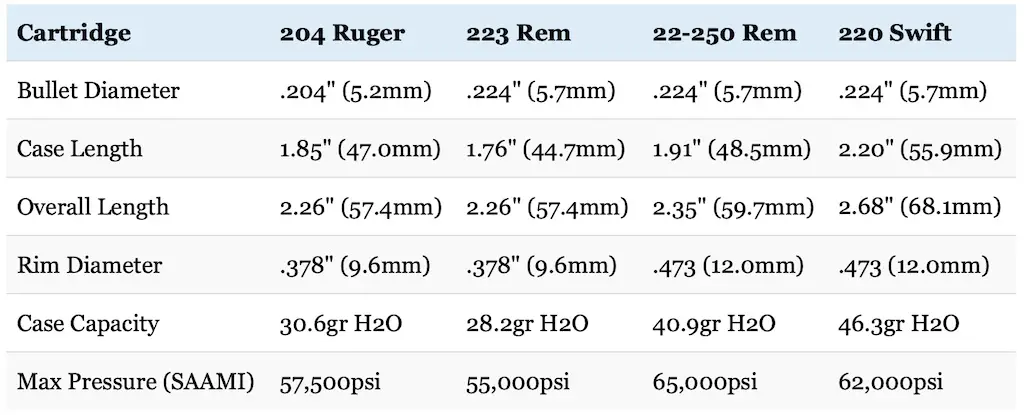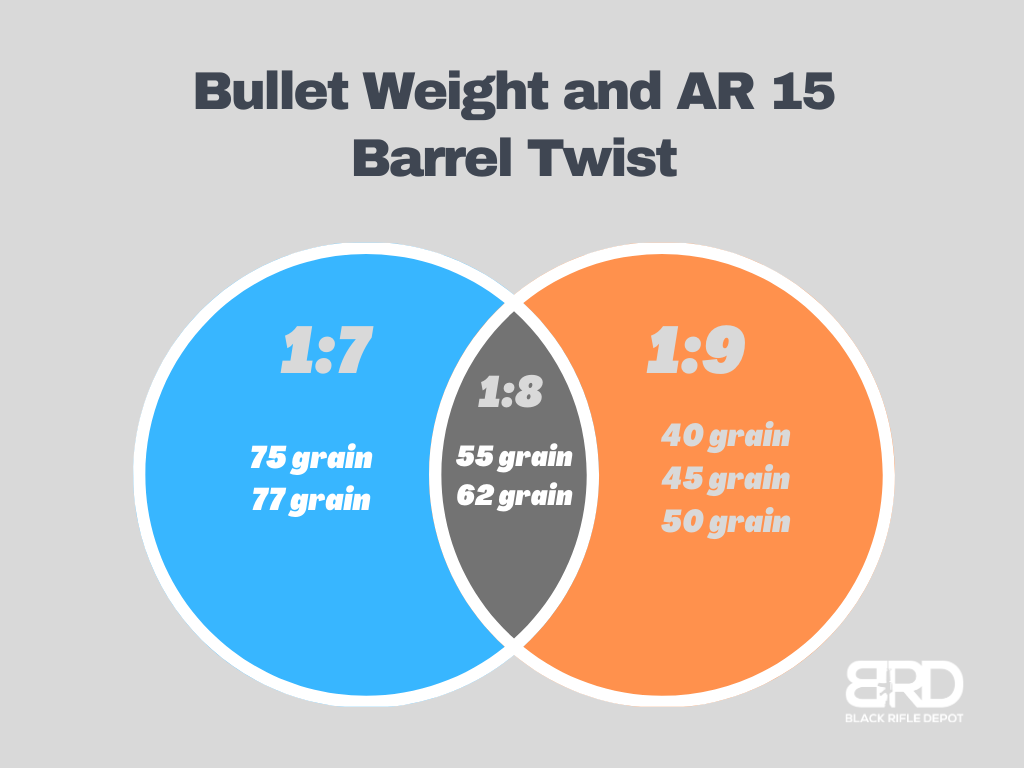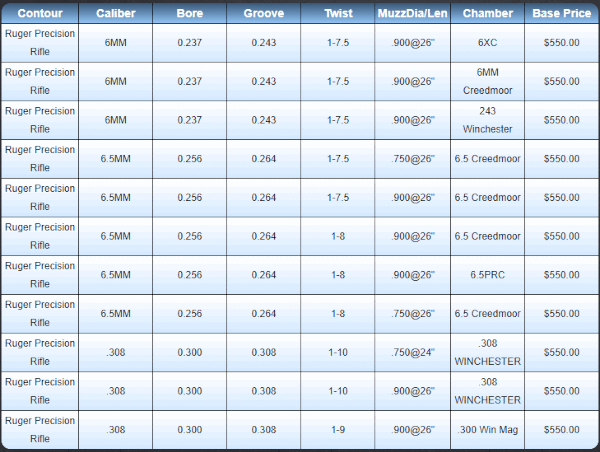
Of course, the question is: just when does a particular projectile become unstable? If the two criteria that control stability are velocity and projectile length, we can only control velocity and eventually, when we reach the maximum load, there is nowhere else to go! This is very useful information: many of these notes apply to projectiles that are not excessively long.
#Ruger rifling twist rate chart manual#
It is also interesting that the Hornady reloading manual No.9 and the Barnes Manual No.4 contain notes on various cartridges indicating that certain projectiles within that calibre will not stabilize in particular barrels. But the barrel will not stabilize 63gr projectiles, as these particular types require a 1:12 twist. Load from a Disc suggests that the barrel for this projectile should be 1:14 – perhaps a perfect fit? It’s certainly the most accurate Swift load. The rifle also shoots 50gr Nosler solid-base projectiles at some 3,834 fps and is very accurate at this speed – groups are consistently less than 0.75” in size. The final bit of theory is that hotter ambient temperatures can reduce the required twist rate because the projectile speed is higher, and the same applies to increasing hunting altitude.Ģ2/284 requires 1:8 twist to be accurate - Credit: Archant different projectiles were unstable even with quite modest changes in projectile length and weight. 223 Remington, barrel twists were changed with different ammunition, i.e. 260 Remington was released with a 1:10 twist barrel, too slow to stabilize the long 6.5mm projectiles. If you are interested, there is plenty about it on the internet. I do not intend to add to the discussion. 243 Winchester V 6mm Remington is a classic example and most firearm writers have covered the subject at some time or another. There have been some notable failures in firearms history whereby the manufacturer designed a rifle with an incorrect barrel twist.
#Ruger rifling twist rate chart driver#
It is noticeable that some rifle barrels will shoot a particular projectile with better accuracy than others sometimes even small differences actually do make one projectile a veritable tack driver when compared to another. However, the short answer is that while you can shoot light, short projectiles in a fast-twist barrel the reverse is not correct. We come up with that term ‘balance’ again. In addition, there may be more barrel wear due to the excessive rotation. If the projectile is a frangible varmint type that is designed to blow up easily on small, light-boned animals, excessive twist may tear the projectile apart shortly after exiting the barrel. But there may be some adverse effects depending on the barrel and a particular projectile. While longer, heavier projectiles require faster twist barrels for stability, what happens when you fire lighter, shorter projectiles in the same barrel? The short answer is: probably nothing.

Aside from long-range shooting, your hunting projectile should also be compatible with the barrel of your rifle. If, like myself, you are interested in long-range varminting, then matching the twist to the projectile is vital to achieving the desired result. The incorrect twist will not stabilize your projectiles and accuracy will suffer. The correct twist, when matched with the projectile of your choice, will provide maximum accuracy, all other items being considered. Does this create a twist problem for the rifleman? There are ‘all copper’ projectiles along with other metals they are, of course, long for their weight, and many have a polymer tip.

Furthermore, the construction of many projectiles has changed. In addition to those manufactured by the major companies, smaller custom makers are producing specific projectiles for hunting, usually in a few calibres. Perhaps the biggest shift in recent times has been the virtual explosion, in numerical terms, of really good quality hunting projectiles.

At the other end of the scale, a shorter projectile can accommodate a lower, slower twist rate. The greater the velocity, within limits, will also aid in keeping any given projectile stable. It follows that the longer projectiles are also heavier in weight for any given calibre. The basic factors are well known – in simple terms, the longer the projectile in relation to calibre, the faster the twist required to stabilize the projectile in flight.


 0 kommentar(er)
0 kommentar(er)
